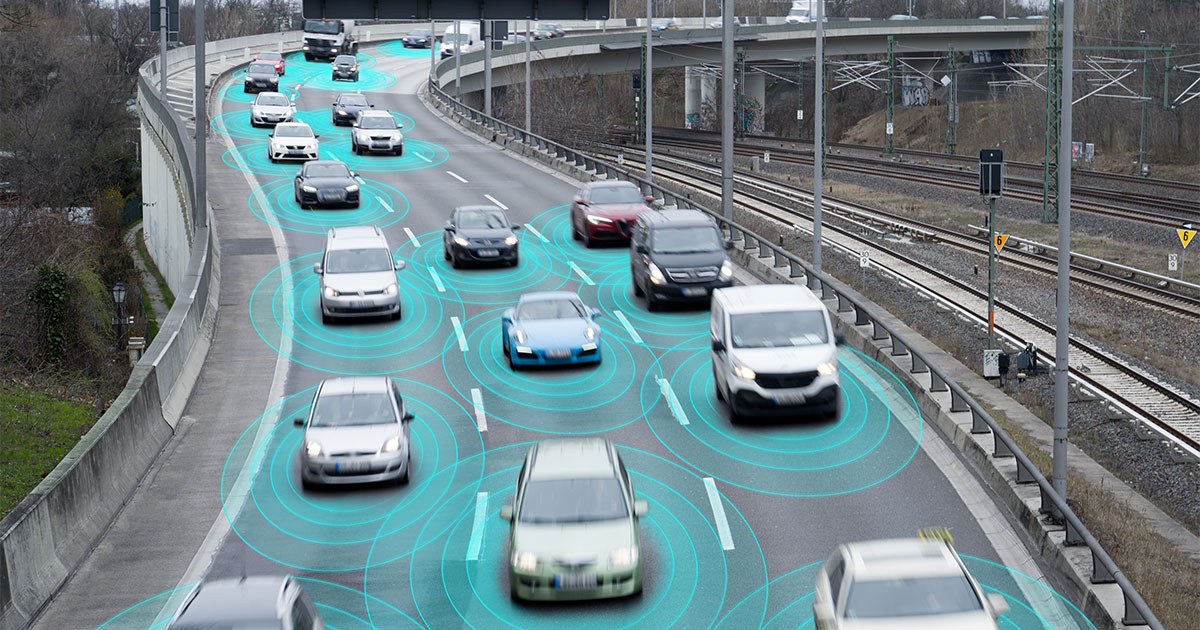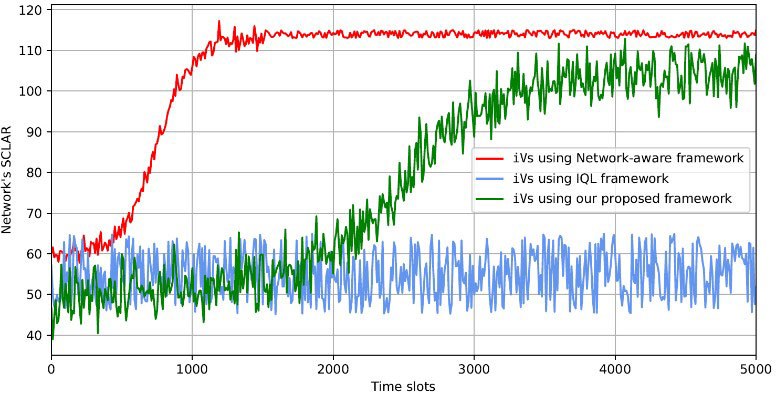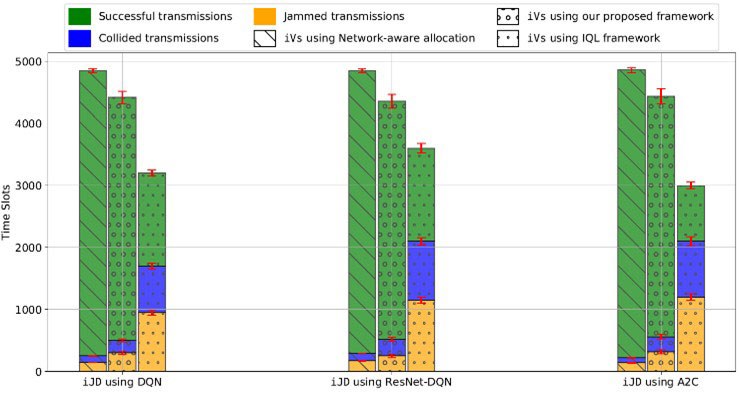
When Cars Talk, Disruptions Can Be Deadly
Picture a bustling downtown area where hundreds of cars, buses, and emergency vehicles communicate with each other in real-time. They exchange warnings about traffic hazards, coordinate lane changes, and synchronize with traffic lights to keep traffic flowing. Now imagine a malicious transmitter flooding these channels with noise, silencing critical warnings and leaving vehicles unable to “hear” each other amid the chaos.
Such disruptions can quickly snowball, turning routine traffic into gridlock, causing avoidable accidents, and even blocking emergency vehicles when they are needed most. Ambulances may struggle to communicate their routes to traffic lights during rush hour, or autonomous cars may fail to warn each other of sudden stops. In a world increasingly dependent on digital conversations between vehicles, even a brief disruption can ripple through the entire system with serious consequences for safety and efficiency.
This is the reality facing the Internet of Vehicles (IoV), a vital component of smart cities and intelligent transportation systems. To make our roads safer and traffic flow smoother, vehicles must remain reliably connected at all times. Yet, as networks grow denser and more complex, they also become attractive targets to adversarial elements seeking to disrupt these critical communication systems. Recently, such adversaries have begun to manipulate artificial intelligence, enabling them to adapt their interference strategies in real time and making disruptions more effective than ever before.
Why Conventional Approaches Cannot Keep Up
Ensuring reliable communication in IoV networks has long relied on traditional methods, but these strategies are increasingly challenged as cities grow busier and interference becomes more intelligent. In most designs, communication channels in vehicular networks are either managed centrally by roadside units or left to the discretion of each vehicle. Centralized management ensures order, but often collapses under heavy traffic or when malicious devices adapt faster than the system can respond. In contrast, autonomous decision-making avoids a single point of failure but quickly leads to increased self-interference, much like everyone talking at once in a crowded room.
The result is similar to a stadium where thousands of smartphones compete for a weak Wi-Fi signal, overwhelming the systems. When adversarial interference is added to the mix, the network becomes not only inefficient, but also increasingly vulnerable to disruptions.
Neither approach is sufficient against adaptive and intelligent malicious interference. The way forward is to build resilient and adaptive solutions, guided by artificial intelligence, that can transform such disruptions into coordinated and reliable communication.
Turning Artificial Intelligence into a Shield
At ÉTS, our research team responded to these challenges by designing a resilient distributed spectrum sharing framework for the IoV paradigm. Instead of relying on rigid rules, our approach empowers vehicles to learn to communicate efficiently, even in the presence of malicious interference. Key innovations include
- Multi-agent reinforcement learning (MARL): Vehicles act as independent learners, making their own channel access decisions while continuously improving through interaction.
- Centralized training with local execution: A roadside unit provides guidance during training and once deployed, vehicles operate autonomously.
- Counterfactual reasoning: Each vehicle evaluates not only the outcome of its own action but also how it contributes to the overall network’s performance, which fosters implicit cooperation.
- A carefully designed reward mechanism helps vehicles distinguish between natural interference and deliberate disruptions, enabling more intelligent adaptation.
Together, these innovations enable vehicles to act not as autonomous machines but as part of an intelligent, cooperative community. Instead of collapsing under interference, the network learns to adapt, transforming chaos into coordinated and resilient communication. In essence, artificial intelligence becomes not merely a tool for efficiency, but also a protective shield, allowing vehicles to adjust as conditions change and cooperate even without direct coordination.
What the Results Show
The proposed framework was tested through large-scale simulations that recreated urban mobility patterns and adversarial interference. Results show clear improvements over the benchmark solutions.
- Higher channel utilization: Vehicles were able to use available communication resources more effectively, even when multiple users competed for the same channel.
- Resilient throughput: The proposed framework consistently delivered higher data rates, ensuring that safety-critical messages reached their destination.
- Robustness against malicious interference: Even under powerful intelligent interference attacks, network performance remained close to optimal, while traditional approaches suffered significant drops.


In practice, this means that even when communication channels are under deliberate attack, our framework sustains reliable performance. Where traditional methods see lost messages and coordination break down, our approach keeps the digital conversation alive, ensuring continuity of safety-critical alerts and data flow.
From Vehicles to Critical Infrastructures
Although this study focuses on connected vehicles, the implications are far-reaching. The same principles of resilient, AI-driven communication apply to smart grids, emergency response systems, and industrial IoT, where robust performance under attack is equally critical.
Consider, for instance, how smart grids must balance energy flows across entire cities, or how disaster recovery teams rely on drones and field sensors to coordinate relief efforts. In each of these cases, resilient communication ensures that vital services remain operational even under targeted disruption. By turning artificial intelligence into both a shield and a learning tool, our work paves the way for networks that are not only connected, but also resilient, adaptive and secure.
Additional Information
Readers interested in a deeper dive into our methods, extended evaluations and detailed experimental settings can explore our full paper: Learning Resilient Distributed Channel Access Policies in V2I Networks Under Intelligent Jamming



